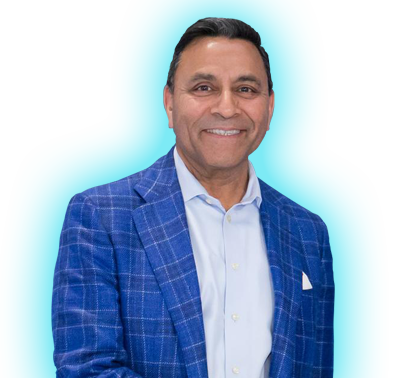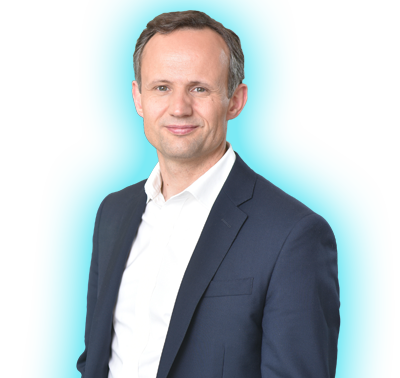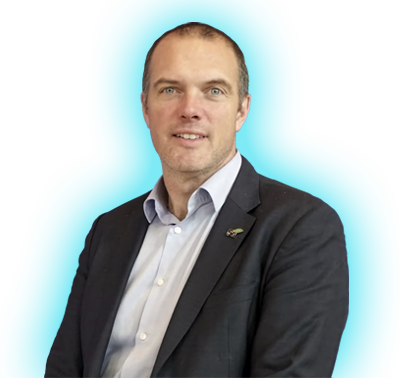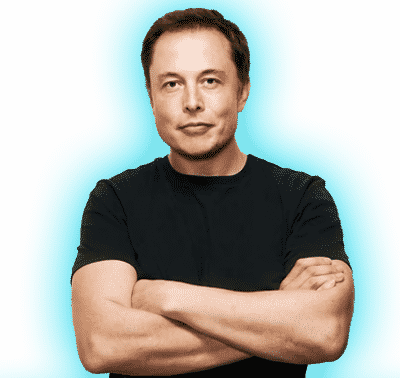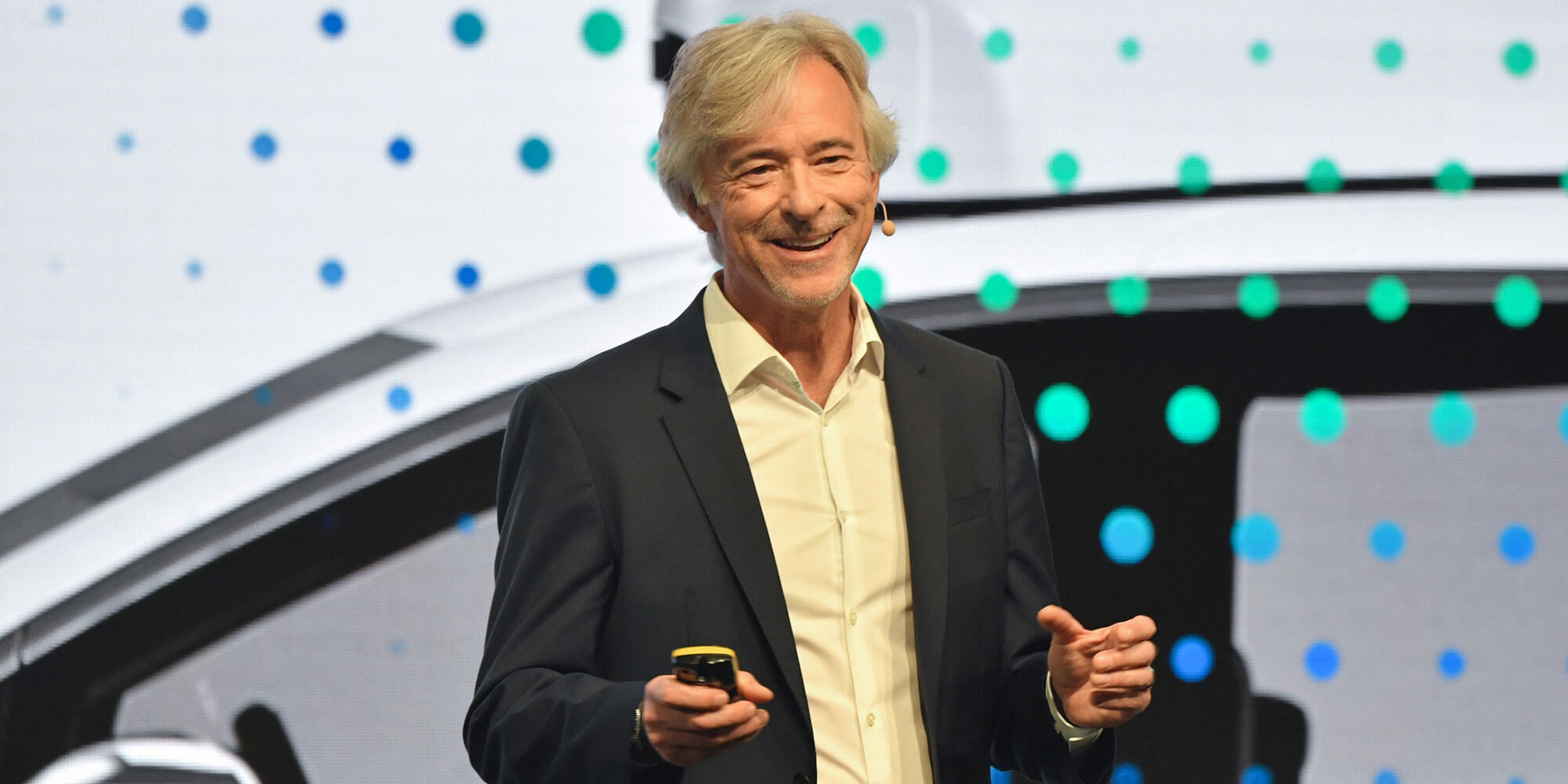
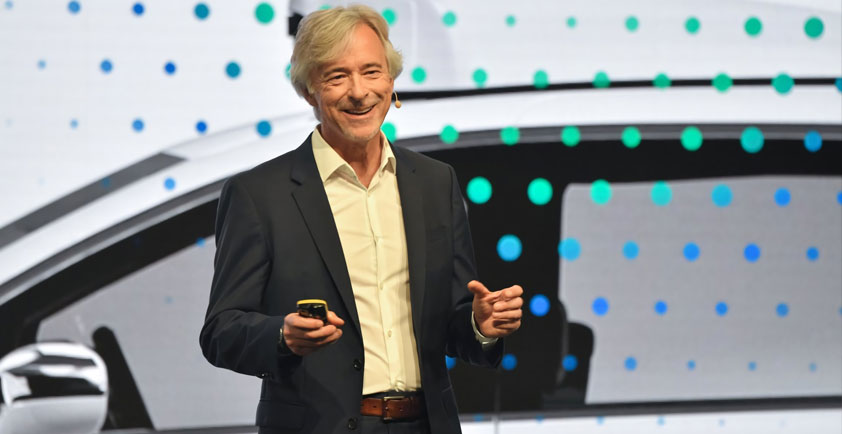
WAYMO @ IAA FRANKFURT
WAYMO's CEO John Krafcik took the stage at IAA Frankfurt auto show to share more on our journey here at Waymo and where we’re going next. Here’s a recap of his remarks.
Hallo, und guten Morgen! It’s an honor to be here with you in Frankfurt to kick off IAA 2019. I’d like to recognize Chancellor Merkel, President Mattes, State President Bouffier, and the other illustrious attendees here with us.
Today I’ll be introducing you to Waymo. First, we are not Google. And, we are not a car company. We’re also not a self-driving car company.
Rather, we are a technology company, building the world’s most experienced driver: The Waymo Driver. Our mission is to make it safe and easy for people and things to move around the world.
Let’s start with safety. 1.35 million people die each year around the world in traffic crashes. That’s as if an Airbus A320 with 150 people crashed, every hour, of every day, all year long. 50 million injuries worldwide are caused by vehicle crashes, every year. And 2 out of 3 people will be involved in a drunk driving crash in their lifetime. There’s a central theme to most of these incidents: 94% of the time, human error is the root cause.
And for many of us, the freedom that comes with a driver’s license isn’t even a possibility. In many developed countries, more than 20% of adults are unable to drive due to vision impairment or other disabilities.
Fully autonomous driving technology holds the promise of improved road safety and new mobility options and freedom for millions of people.
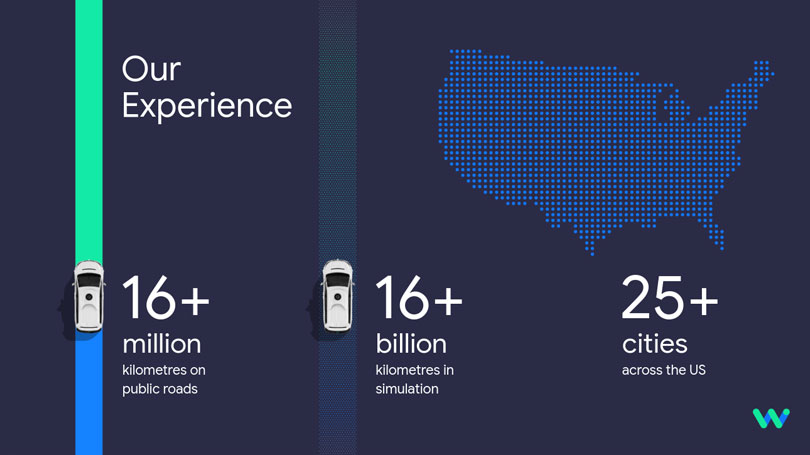
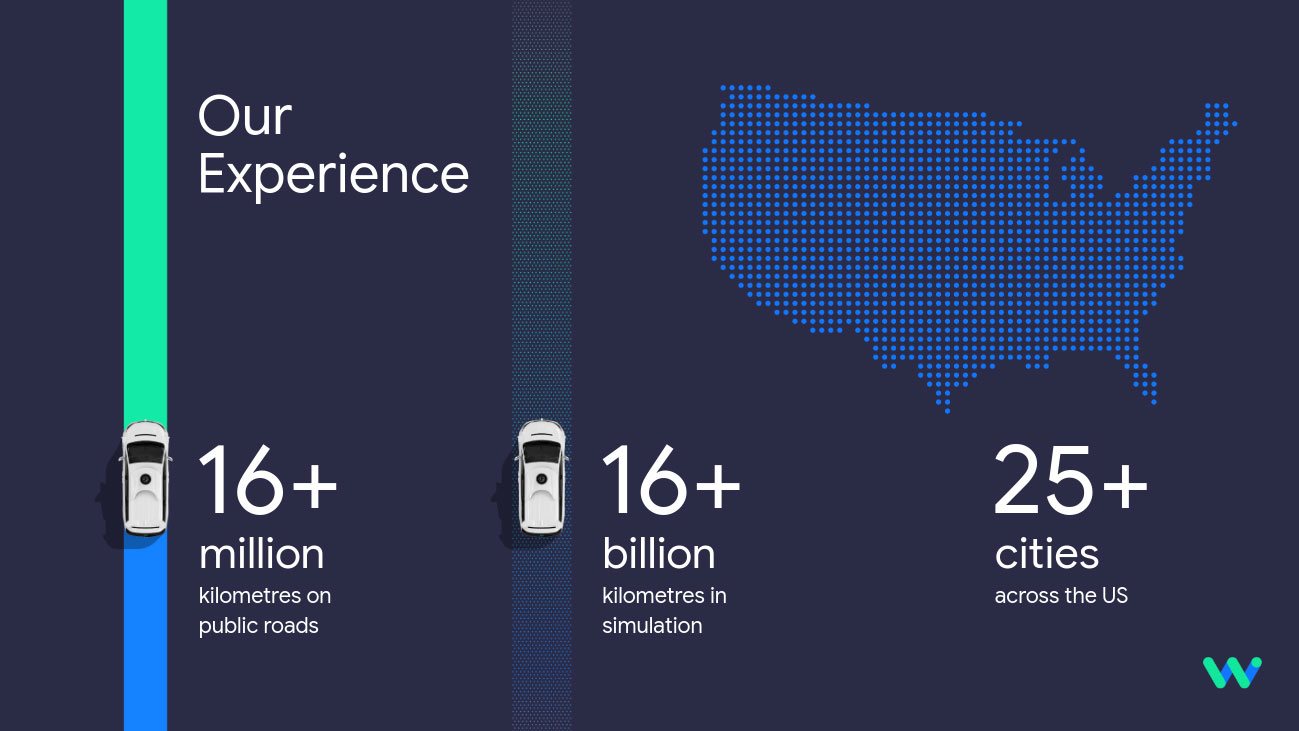
I’m going to share what we’re up to these days in a few minutes, but before I do that, I want to share a bit of our history. There’s an important pivot we made several years ago that led to our focus on fully autonomous driving — where no human interaction is required — instead of systems that still require licensed human drivers to oversee driver-assist functions.
In 2009, the Google founders hired a small group of engineers to start a self-driving car project. They challenged the team to drive autonomously over ten 160-kilometer routes on challenging roads around San Francisco. The bar was set high — each of these drives had to be completed without any human intervention.
Remarkably, within about a year, they succeeded. That early success gave confidence that this technology was worth pursuing, and so we set out to find the best way to commercialize it.
Our first idea was to introduce a product that would drive on autobahns on its own. Hands-off driving was okay, but driver oversight was still required. We even had a name for it — internally, we called it “AutoPilot.”
We recruited dozens of eager employees with long highway commutes to test it — all of them agreeing to our stipulations:
> You must pay attention and keep your eyes on the road at all times
> You can take your hands off the wheel, but you must be alert
> We will be watching you via cameras in the car and if you don’t follow these rules, we’ll take the car away from you
This was in early 2013. Any one care to guess what happened? Let me show you…
There’s one person texting and driving. Another person using a laptop to charge their phone. There’s another applying make-up and curling their eyelashes….And this last video was the one that caused us to shut down the AutoPilot project after just a few weeks of testing — the driver fell asleep while hurtling down the road at 90 kilometers per hour.
Now, the good news is, we had gained a priceless insight into a real conundrum. Our AutoPilot system was very advanced. It used multiple cameras, radar and lidar, with a massive on-board computer. In fact, it was so advanced that human drivers became too comfortable, too quickly. And so we realized this was a big problem for driver assist technology — the better you make it, the more likely humans would be to trust it too much.
So we pivoted in 2013, with inspired resolve, and with the belief that the only way to solve the problem of roadway safety, and the only way to deliver the opportunity of mobility for all, was to take the human completely out of the loop. We committed then to full autonomy, no driver monitoring, nor driver’s license, required.
At the time, this was the only project in the world that had these three critical ingredients:
> A commitment to deliver fully autonomous technology without the distraction of “driver assist” systems
> A large team of software engineers at the cutting edge of emerging AI and machine learning technologies
> A commitment to develop not just the software, but also the hardware — including our own mapping, radar and lidar technologies
So we set off in 2013 with Firefly, a clean-sheet approach to develop a low-speed vehicle that could move people around cities, using the 3rd-generation of our technology.
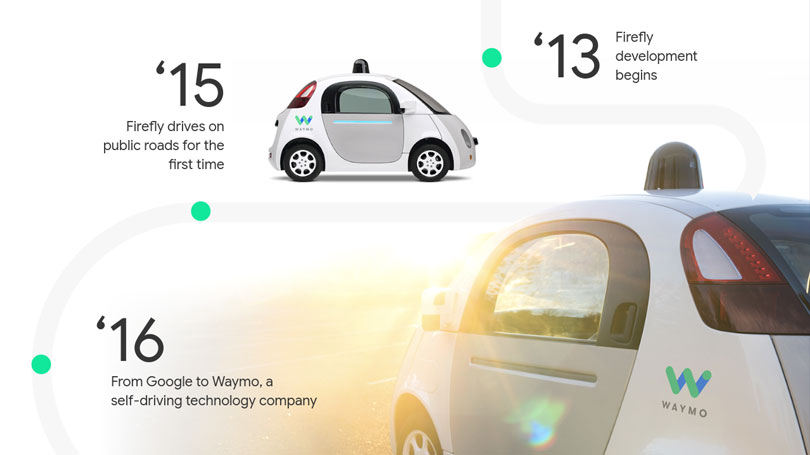
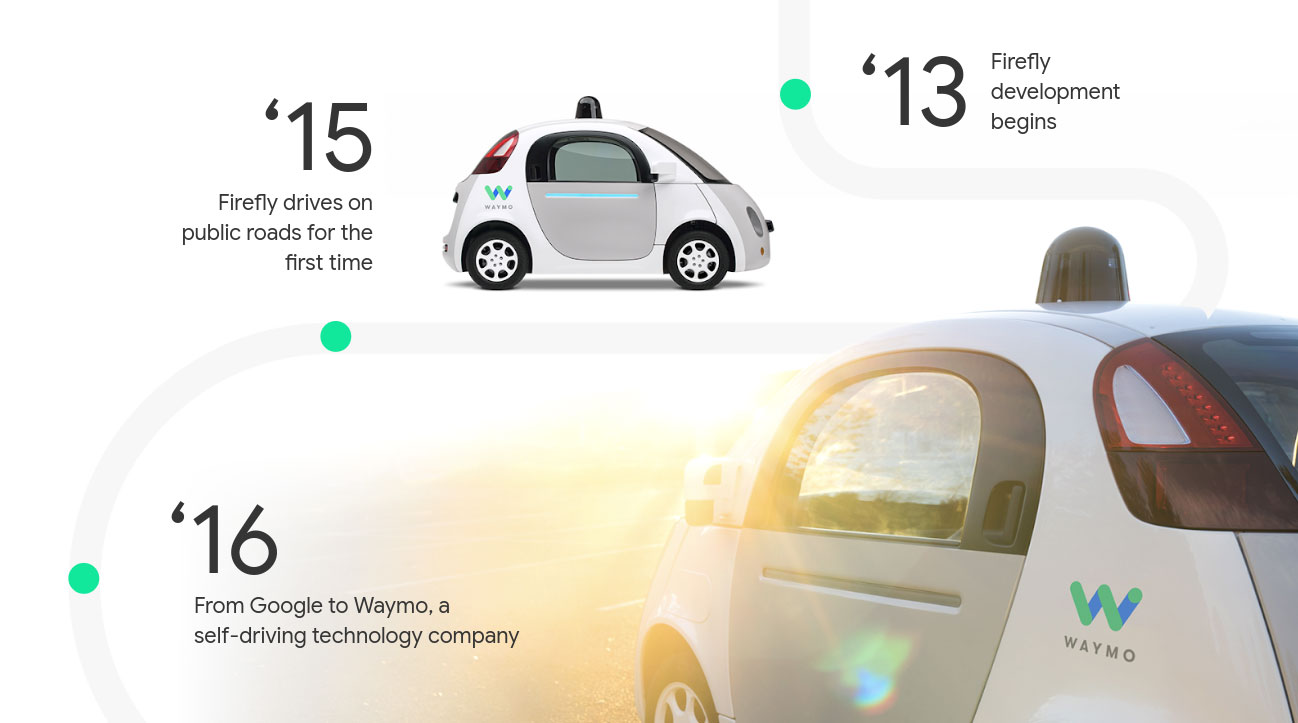
Two years later, in 2015, we completed the world’s first fully autonomous ride on public roads in Austin, Texas.
In 2016, with that landmark ride under our belts, we transitioned from being part of Google and became Waymo, an independent company within Alphabet.
Then, we retired Firefly and moved forward with our first automotive collaboration — with Fiat Chrysler America (FCA) and their Pacifica minivan, integrating the 4th-generation of our hardware.

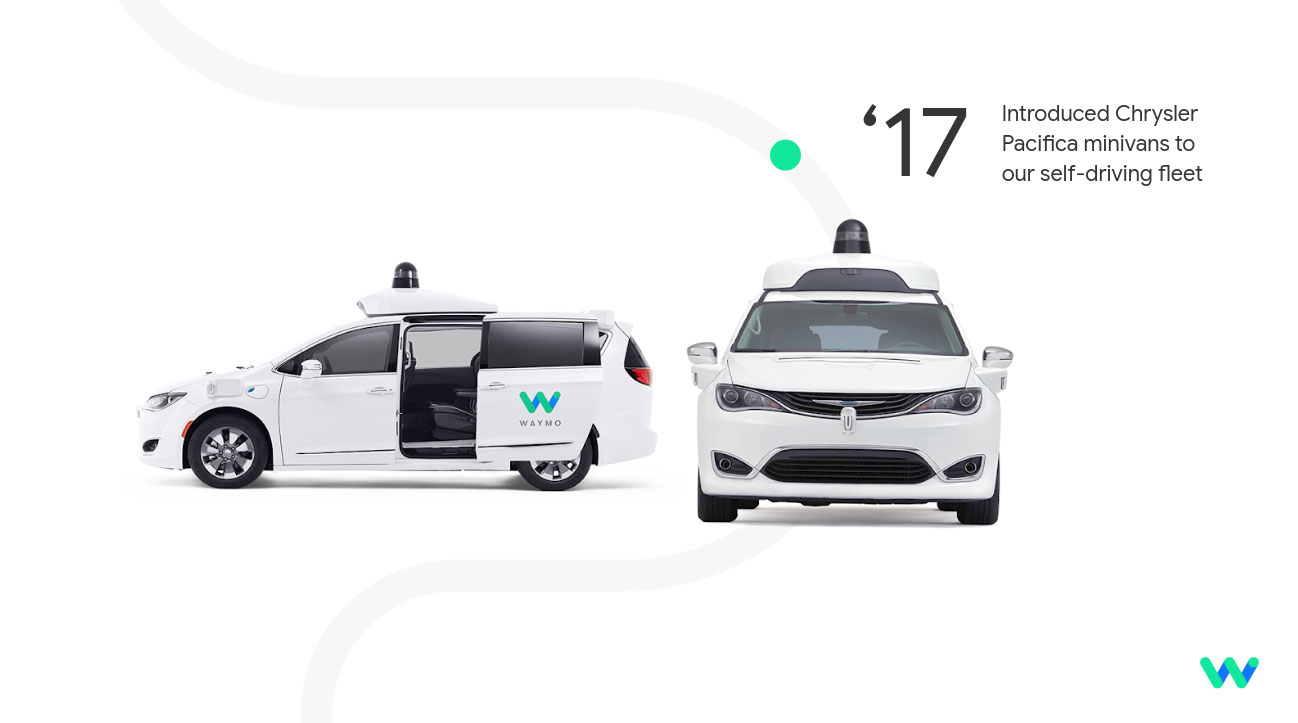
We had realized that our future wasn’t about becoming a car company, or about competing with car companies. We saw our role clearly — to provide Waymo Drivers for the world.
We would seek to enable, not disrupt, existing companies in the automotive space. And so we partnered with companies like Avis and AutoNation to help manage our fleet while also serving their needs.
In 2018, we partnered with JLR (Jaguar Land Rover), to add a second vehicle to Waymo’s fleet — the Jaguar I-Pace, integrating our 5th-generation Waymo Driver. This all-new system adds four-season sensor capability, new sensing modalities, and a revolutionary new lidar that achieves another order of magnitude improvement in cost-per-function compared to our 4th-gen technology.

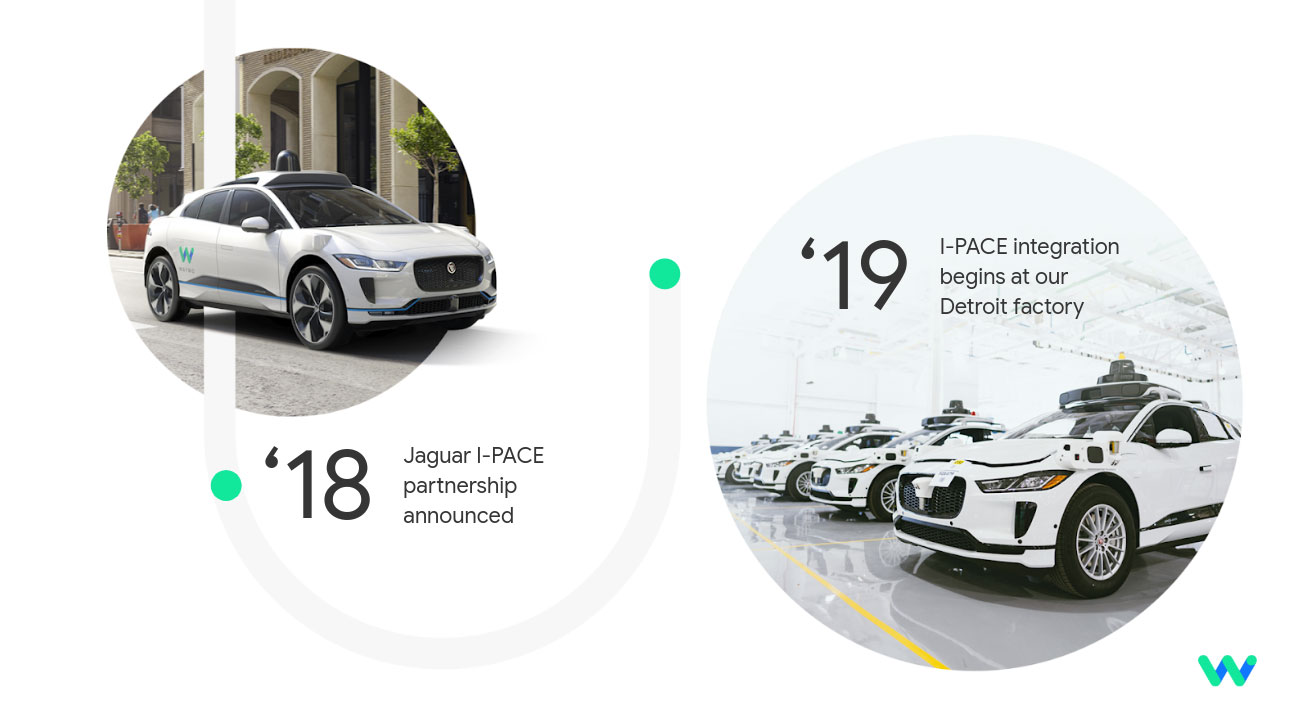
Working with our partner Magna, we just opened the world’s first factory 100% dedicated to autonomous Driver integration, right in the heart of Detroit, Michigan.
The first 30 of these cars are now at our facilities in California gearing up for development and testing, working closely with our friends at JLR and Tier One suppliers like Bosch, Valeo, and Osram.
The first Pacificas and I-Paces will be put to work in Waymo’s own network, which we’re just launching in Phoenix, Arizona.
But we’re also planning to partner with others to put the Waymo Driver to work. Earlier this year, we signed an agreement with Renault and Nissan to explore mobility services for passengers and deliveries in France and Japan. We’ll share more about this work going forward.
And about Waymo’s own service? We got that started in April 2017, when we first invited folks to join our early rider program.
After a year and a half of learning from them, we took the next big step in December 2018 by introducing our public ride-hailing service, Waymo One, which now has over 1000 riders who hail Waymo fully self-driving cars via our mobile app.
We’ve been testing at small scale in fully driverless mode since 2017 — with no trained human driver behind the wheel. And we’ve begun to responsibly ramp up our driverless offerings to riders in the Metro Phoenix area.
One of the things we love most is our riders’ reactions the first time they experience full autonomy themselves. Let’s have a look:
So what does the future hold for Waymo and the deployment of our technology? With the help of our partners, we plan to deploy our Waymo Driver globally, serving many different industries.
As I’ve shared today, ride-hailing is an important application of our Driver.
Our technology can also make trucking safer and stronger and fill a pressing need for more drivers in many parts of the world. We’ve already conducted road tests of the Waymo Driver in Class 8 trucks across the US, and we’re working closely with the ecosystem — shippers, truck makers, and Tier One suppliers — to ensure a successful deployment.
Our OEM partners are also interested in sharing the Waymo Driver with their customers, and we’ll find a way to serve that need as well.
Our journey has been a long one, but there is still a long road ahead. For sure, we’ve learned a few key things over these past 10 years.
First, every step matters. While early progress can seem rapid in this space, we’ve found that achieving scale, safety and robustness, and understanding what it takes to delight our riders, takes time and massive effort. There are no shortcuts.
Second, we can’t do this on our own. We’re grateful for the help of all of the partners and communities we have served. They’ve helped us embrace the many possibilities of autonomy — and in so doing have helped us see a bigger vision, with a grand opportunity to redefine together many aspects of our world — commuting, logistics, safety, accessibility, productivity, urban design and so much more.
Thank you for your time today. We’re looking forward to working with you to take these next steps together, in a way that serves all of us.
